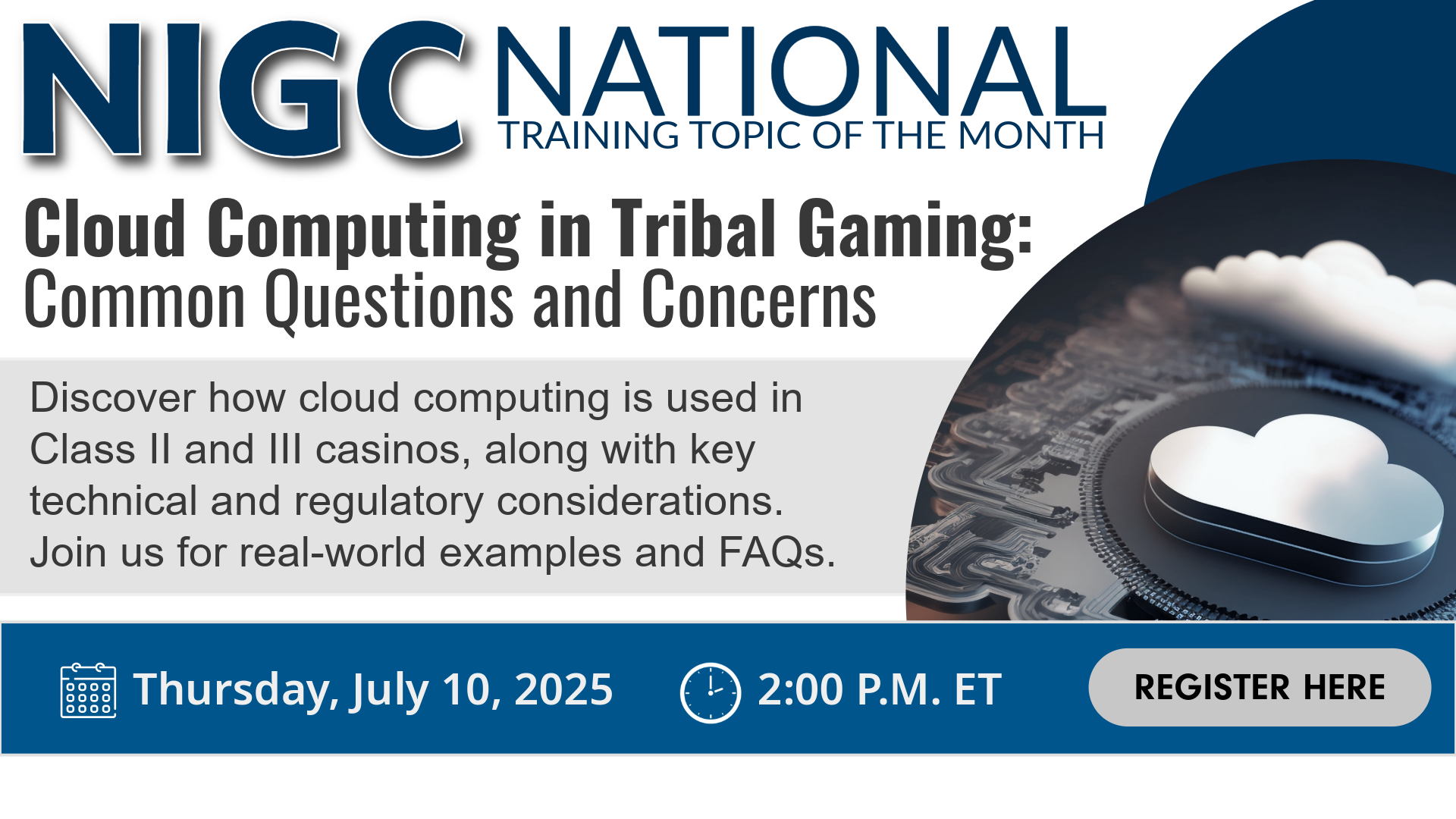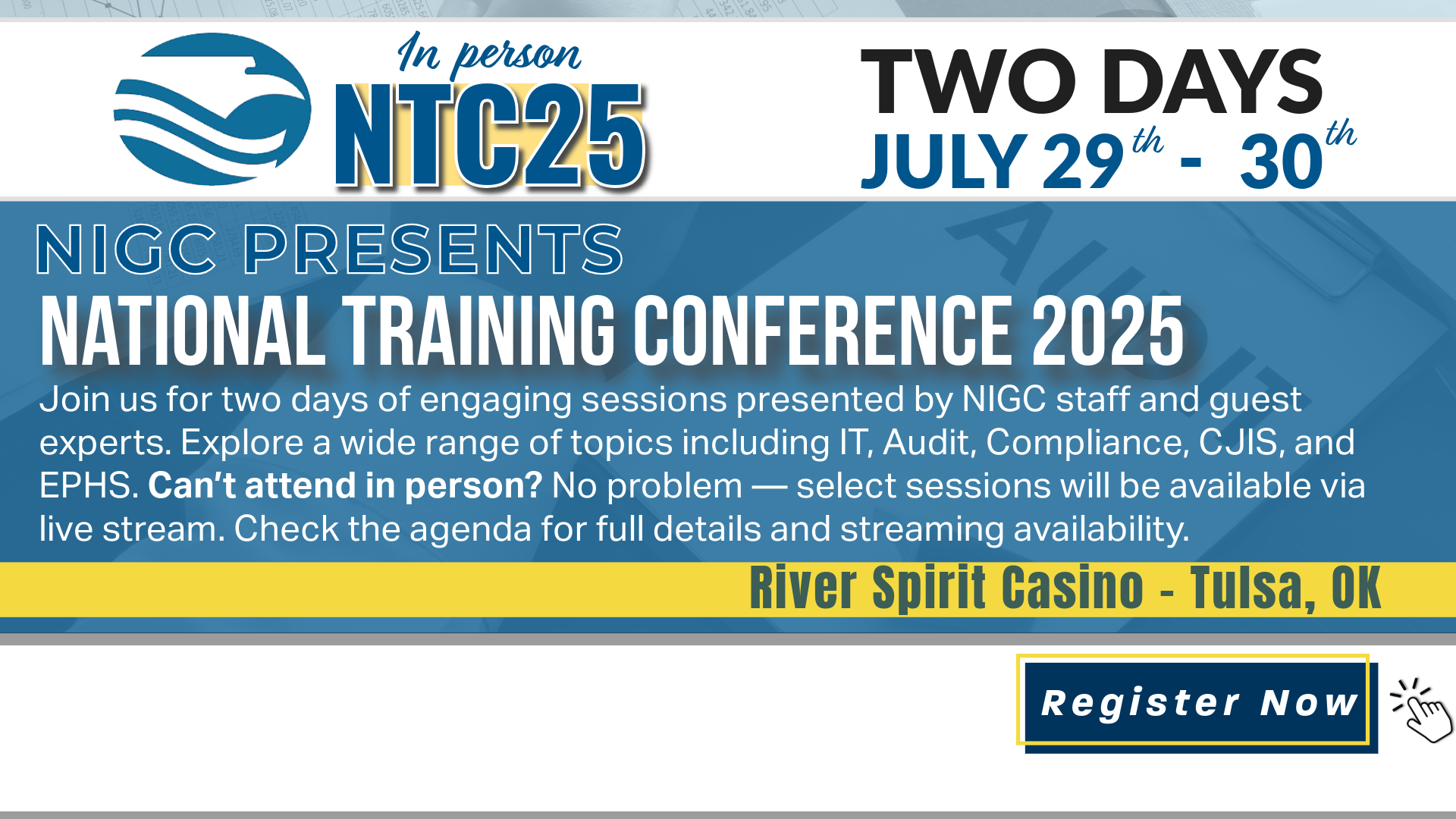For Immediate Release
Contact: Sarah Walters
(202) 632-7003
NIGC Announces Publication of Final Rule for Facility Licensing Regulation Part 559
Revised Rule Streamlines Process and Reduces Paperwork
Washington, DC September 24, 2012 —Today, the National Indian Gaming Commission (NIGC/Commission) announced the publication of important revisions to 25 CFR Part 559 Facility License Notifications and Submissions.
The final rule streamlines the facility license notification and submission process by considerably reducing paperwork and resource burdens on tribes.
“Consistency, clarity, and efficiency are all important for proper regulation,” Chairwoman Tracie Stevens stated. “These updates make the process clear to the regulated community, streamline the paperwork submission requirements and provide notification to the NIGC of Tribes’ consideration of the issuance of facility licenses.”
Pursuant to the Indian Gaming Regulatory Act (IGRA), 25 U.S.C. 2710 (b)(1), tribes are required to license each facility in which they conduct gaming and over which they have jurisdiction. Part 559 addresses this section of IGRA by governing the process by which tribes must notify the NIGC when they are considering issuing a facility license; when a facility license is terminated; and when a facility licensed is renewed.
A number of substantial revisions were made to the rule, such as removing the requirement that all facility closures must be reported to the Commission. Because many facilities may temporarily close due to construction, natural disasters or seasonal reasons, the new rule requires only permanent or temporary closures exceeding 180 days be reported to the Commission. In addition, in recognition of the Tribal Gaming Regulatory Authorities (TGRAs) and Tribal Law, the Commission eliminated the three-year renewal requirement for facility licenses and deferred to the tribes’ governing practices. Also, given that many tribal, local, state and Federal agencies are involved in the environmental and public health and safety (EPHS) of tribal gaming facilities, the new rule also removes duplicative EPHS paper submission requirements in favor of a single submission attesting to EPHS requirements.
Associate Commissioner Little stated that, “[i]t is important to acknowledge Indian gaming’s three-tiered regulatory structure by including flexibility and discretion to TGRAs. By deferring to Tribal Law regarding the renewal requirement, the Commission recognizes TGRAs’ role as the day-to-day, front-line regulators to more closely meet individual tribal regulatory needs. This rule allows sufficient flexibility so that gaming operations in a variety of circumstances can comply without undue hardship.”
The finalized regulation is the result of a deliberative process that the Commission began in November 2010 as part of its Regulatory Review initiative. Using an improved consultation process that involved tribes and stakeholders early in the rulemaking process, the Commission was able to gather vital information before beginning the formal rulemaking process.
“From the beginning we knew that Part 559 would be a top priority,” recalled Vice Chairwoman Cochran. “Tribes told us that many aspects of the rule were problematic, and we knew from our own experiences that the rule needed to be revised,” she added.
After participating in informative conversations with tribes, and receiving public comments during the informal drafting phase, the Commission released a Notice of Proposed Rule Making (NPRM) on January 31, 2012 with the comment period closing on April 2, 2012. The Commission reviewed and considered all comments on the NPRM received by April 2.
The NIGC is dedicated to assisting tribes to maintain compliance with all NIGC regulations. At a later date, the NIGC intends to issue guidance and offer training and technical assistance to facilitate compliance with this rule. Information will be posted on the NIGC website and circulated to tribes in the near future.
Part 559 is available for public inspection and comment by clicking here. The rule will become effective on October 25, 2012. All related regulatory review information can be found on our website at www.nigc.gov under the Tribal Consultation/Regulatory Review 2011-12/Discussion Drafts.
The NIGC is an independent regulatory agency established within the Department of the Interior pursuant to the Indian Gaming Regulatory Act of 1988.
###
Download the PDF here.










